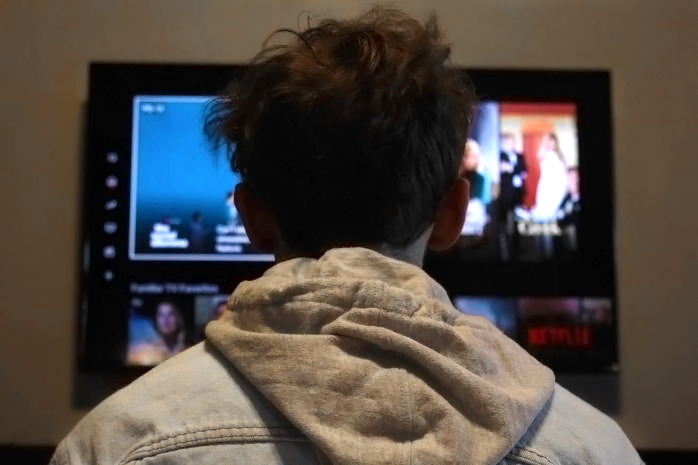Mental Health and the Impact of Portraying it in the Media
Conner Carlow, 11, browses the Netflix home screen.
As any of my close friends could tell you, I have been invested with the Norwegian web series “Skam,” as well as it’s remakes, for the past few months. At first, it was nothing more than a teen drama my friend suggested for binge-watching during the winter months, but it was soon apparent within the first episode that “Skam” offered so much more than I originally thought. The characters and plots of the seasons had a deeper substance of content than other shows or movies I’d previously seen about life as a teenager. “Skam” and its remakes represented a teenager’s mental health and internal conflicts in a way that allows the audience to see themselves on screen and empathize with them without having their antagonism affect your mental state while watching the show.
With Skam’s original release in 2015 through Norwegian public broadcaster NRK and the direction of Julie Andem, the show quickly picked up global praise. Following the show’s end after four seasons in 2017 the first of the remakes, “Skam France” would air its first season in February of 2018 with“Druck,” “Skam Italia,” “Skam Austin,” “Skam España” and “wtFock”, later in the same year.
The series follows a new character each season, who can be seen throughout episodes of other seasons, covering a broad range of topics including disordered eating, sexual assault, homophobia, drugs, abusive relationships, discrimination, mental illness and other issues high schoolers struggle with during adolescence all while remaining light-hearted and comedic. While topics such as these are becoming more prevalent within the media, they aren’t always depicted in the right way and usually end becoming what is referred to as “romanticized.”
Through having characters on-screen portraying the daily struggles of young adults the audience, without a doubt, is going to find and identify themselves within these characters. And, in most cases, the goal is to allow the viewer to see someone on screen go through the journey they are or have been on to remind them they aren’t alone and create a sense of comfort. However, this becomes a problem when the character has the exact opposite effect on the viewers’ mental health. If a character that is perceivable by an audience member makes a dangerous decision the viewer may be tempted to recreate it.
An, unfortunately, wonderful and popular example of this is Netflix’s “13 Reasons Why”. Within the series, not only are numerous scenes of sexual assault and suicidal actions presented to viewers, but Hannah Baker’s suicide is graphic and put on display for vulnerable viewers to watch. Jeff Bridge, a suicide researcher at Nationwide Children’s Hospital in Columbus, Ohio, reported that suicides among U.S. children aged 10-17 jumped to a 19-year high in the month following the show’s release. To put in perspective just how high of a number Bridge is referring to, that’s about 195 more youth suicides than would have otherwise been predicted from April to December of 2017.
Unlike the Netflix original, “Skam” and its successors have shown the same topics and more without being accused of “romanticization” partly due to the production team of the web series conducting extensive research and inviting professionals to set. Andem spent months thoroughly interviewing Norweigian teenagers before writing the show to not only distinguish the difference between her high school experiences and theirs but gain an authentic understanding of what a modern-day teenager’s mental state looks like and the conflicts they now face.
Sputnik, the production company for Skam’s Belgium successor “wtFock,” invited media psychologist Joris Bruyninckx to be a part of the project to ensure the portrayal of sensitive topics were portrayed correctly. With Bruyninckx’s direction, the writers of the series decided to remain at the surface level of mental illness, never going too in-depth to relieve the viewer of any possible triggers. In addition to protecting consumer health, Bruyninckx was also readily available to advise the actors throughout filming whether it was for questions about their character’s struggles, or guidance through their own.
The resources behind any media covering topics involving mental health can make an impact on viewers. Taking the well-seen “shock factor” approach often leads viewers to become distressed or agitated at what they are seeing, causing their mental health to diminish even if previously never having mental issues. Directing a show’s focus on character development rather than the explicit details of their character’s well-being creates enough space between the viewer’s own life and the content they’re consuming to allow them to still feel seen whilst also being protected from any negative feelings which could overcome them.

Kat Carlow is a senior and second-year staff member of the Insight. Previously, she was a staff writer for the award-winning Paw Prints newspaper at Whitehouse...









